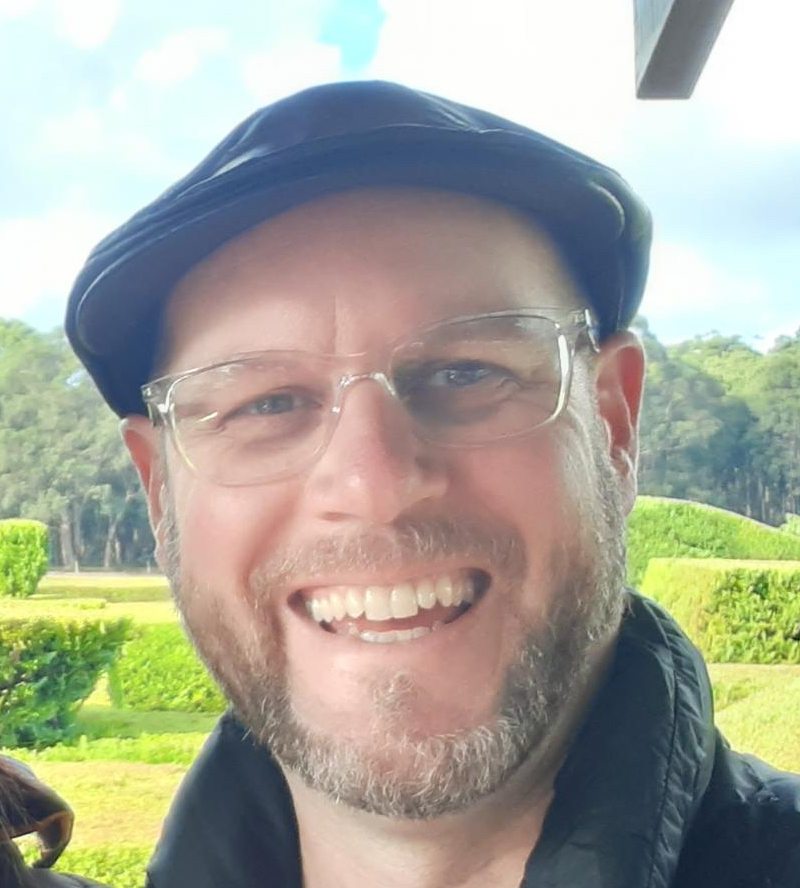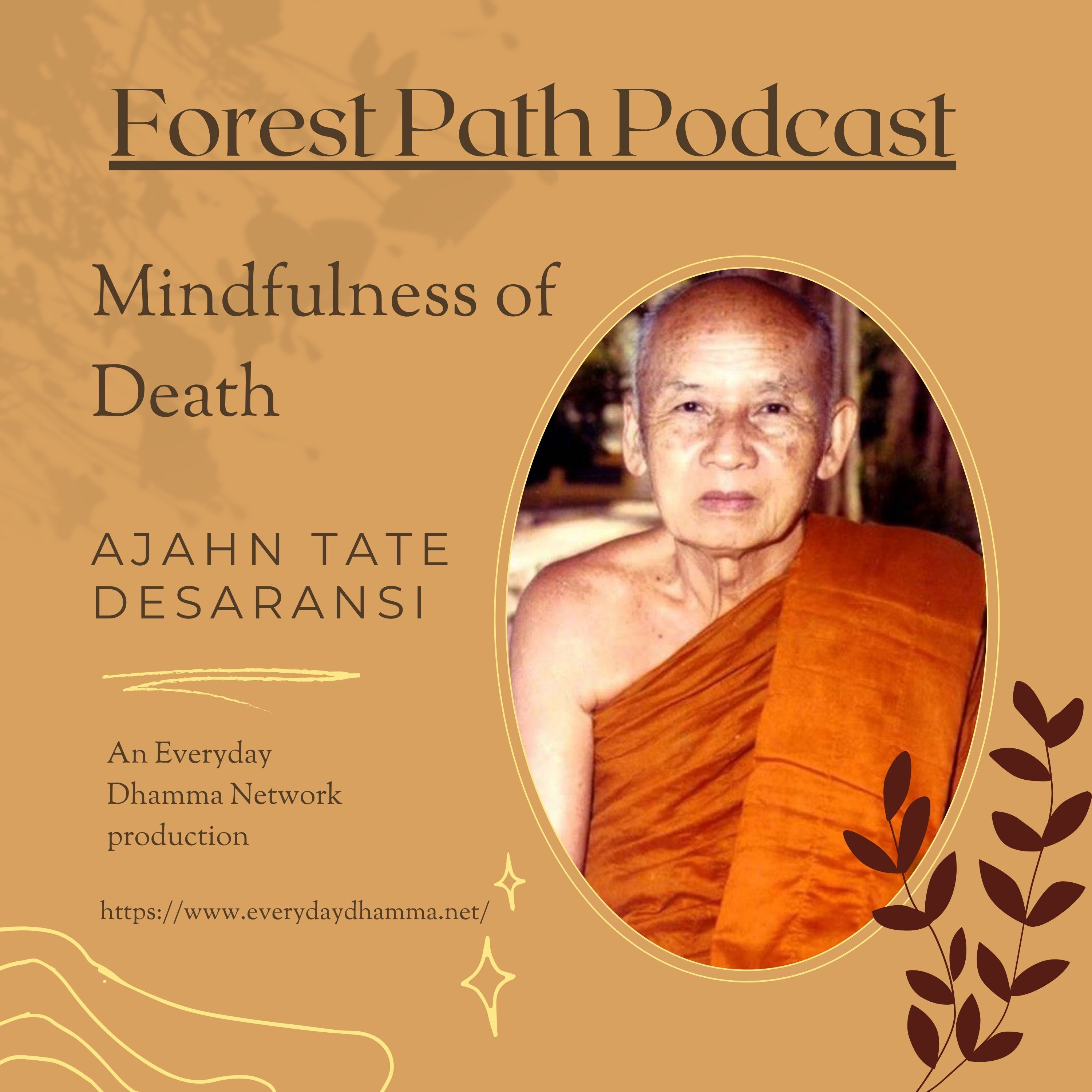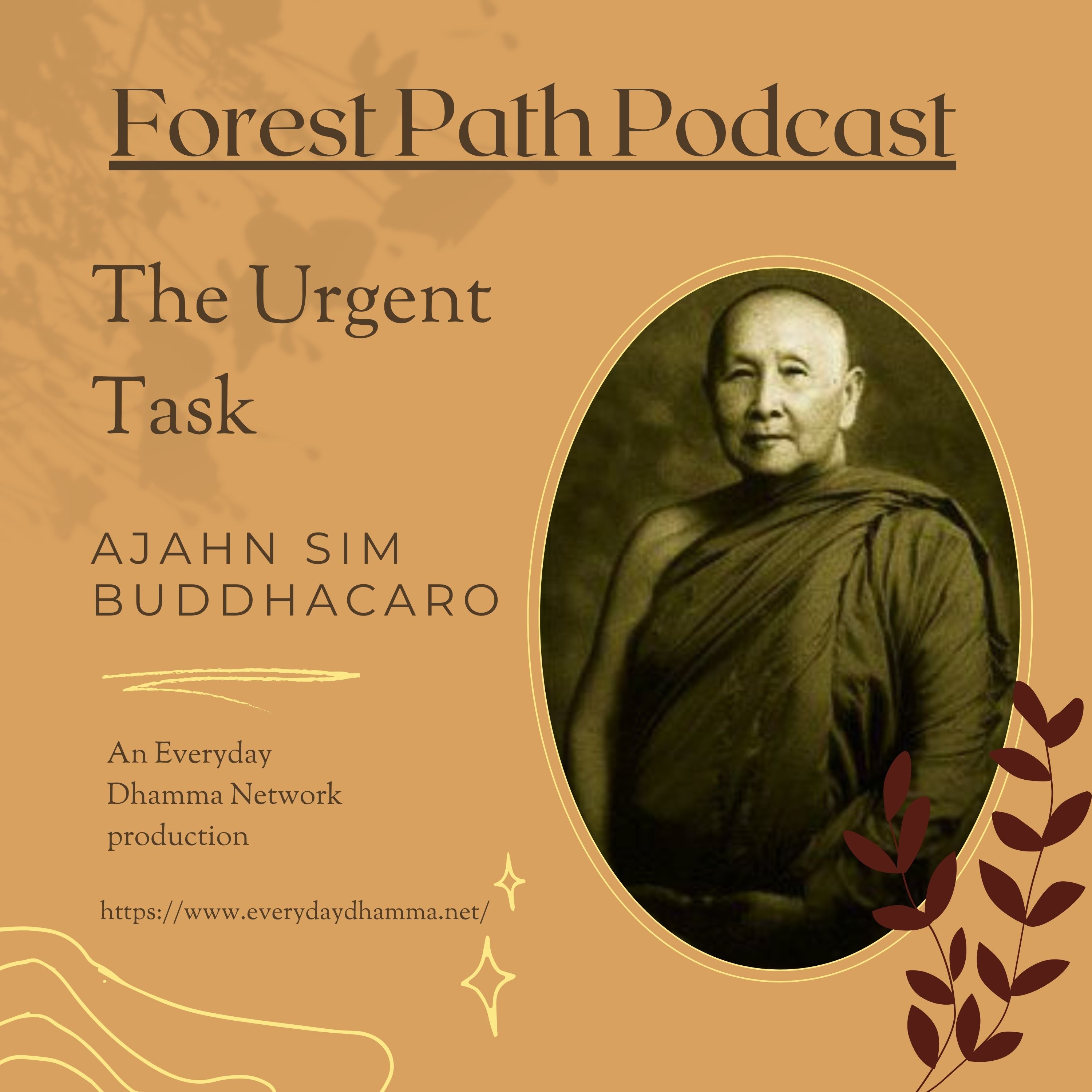Episode Transcript
Mindfulness of Death
by Ajahn Tate
Maraṇa Sati, that is, meditation on death, is a meditation subject of the highest order. This is because, when recollecting death, the Citta becomes melancholy and withdrawn from other objects and emotions.
Death is the ultimate stage of our life. This being the case, what could be left over? Apart from death, there is nothing. Everything we are involved with in this lifetime is cast off completely. Even though we may not want to cast off
these things, we must give them up. We are dead, we have to part company with everything, without exception. This is why I say that Maraṇa Sati is the summit of Kammathāna (the complete practice of meditation). It doesn’t matter who investigates this, if they practice Maraṇa Sati, but the Citta is yet to converge, is yet to be solitary, is yet to let go, is still unable to disentangle itself
7
, then their meditation is up the spout.
With regards to Maraṇa Sati, Lord Buddha asked his monks how they considered death. Some monks responded saying, “When investigating death, we fear our lives won’t last a day or a night. We fear we will die before we have a chance to finish eating our alms food.” Other monks said, “They investigated death as they ate, and they feared they would die before they finished eating.” At this stage the Lord interrupted and instructed these monks, saying they were heedless (in their examination of death).
He instructed them saying, “Whoever investigates death sees death in every breath. This is how one who is not heedless investigates. If the in-breath comes in but does not go out, death occurs. If the out-breath goes out but there is no in-breath, death occurs. This is the way things are and this is what it means to be heedful.”
On a daily basis, how often do we think about death? You know, some people let days, months and years go by without giving death a single thought. This is why they are called heedless. Heedlessness amounts to negligence and loss of awareness. Sati (mindfulness) has gone out the door.
Heedlessness, wherever it is, is a support for death. The saying, “the path of death” has not actually reached death, you know. However, the heedless believe it to be death because lacking Sati is the same as someone who has died.
The opposite of heedlessness, being attentive, is having Sati at all times, in every posture, standing, walking, lying down and sitting. This is “the path to the deathless”. It is the path that has Sati, which is aware of the body at all times. This is what I am talking about. Such a person is one gone beyond death.
We are dying from the moment we are born. We are constantly changing. You could say the child dies and becomes the teenager, a young woman, until they reach forty to fifty years of age and become old and decrepit. These changes occur gradually until right up to death. The mental component that frets and gets involved in all manner of things does not remain static. It jumps from one sense object to another, to another. This can also be referred to as dying.
The death of one sense object in pursuit of another. This is also a death but a death without dying
8
.
I call on you to investigate the implicit nature of death. When the time of death actually arrives, that’s a whole other matter. Dying is not a simple thing. It’s not as easy as we may imagine.
Sometimes a blood vessel haemorrhages, and we die. Heart attacks happen. There are sudden deaths where you don’t hang around at death’s door. There are deaths considerably more torturous than this. Then there’s the case of experiencing pain and illness over many years before death. Sometimes there is paralysis, where you cannot move. You cannot lift your hands and feet. You cannot eat or defecate without assistance. Now, this is the worst of deaths, where we face the Deity of Death
9
first.
Ordinarily, we strike our enemy. He hits us from the flanks, from the left and from the right. He cuts a path to transport his weapons and supplies before he, little by little, starts to destroy us. But it is not all over, this is when the great army storms into attack. This is facing up to the Deity of Death. For example, having a broken arm, or a broken leg could be a prelude to death. Sometimes it is a pain in the head, or stomach-ache. Sometimes it’s a bowel infection. There are all sorts of things it could be. All these are pain and agony whether we are sitting or lying down because we are unable to eliminate them by changing posture, but the heart is yet to crumble. This is extreme torture, not being able to swap posture to get relief. It doesn’t matter how much (other) meditation you have done, when it comes to this moment, it is extremely difficult to establish Sati within the body. It was for this very reason that the Lord Buddha taught the recollection of death, Maraṇa Sati, to enable you to establish Sati when death comes.
In truth, death is no big deal. Before you die, the most important thing is to protect the Citta from all conditions by firmly establishing Sati. You cannot let the Citta become confused. This is critically important!
When minor pain and sickness arises in the body, you must use it to train your investigation of death, recollecting, “This is the way it must be. At present, the truth is, we have not yet reached the point of death. When that point does occur, everything will decay and decompose. The eyes will not see the way. The ears will hear no sounds. The body won’t feel but the mind will be in a state of confusion and panic. Trepidation will be present.”
When we finally get to the real point of death, all attachments will be severed. Even the Sati that has protected the Citta well will disappear. What does arise is the Kamma Nimitta (a sign/vision of some past kamma), or the Gati Nimitta (a sign/vision of where rebirth will take place). In Sukati (righteousness) or Dukati (depravity) there will arise a Kamma Nimitta consistent with one’s Kamma.
For example, killing, stealing, sexual misconduct, etc., which is referred to as depraved kamma.
Kamma Nimitta
: An example would be seeing an animal that we killed. It is in our heart that we see the animal, chasing us, encircling us, hurting us until we cry and moan in distress. This carries on until a sound arises. Sometimes this sound is for all to hear. The sound is just like one made at the time when we were still alive.
Gati Nimitta: In the case of depravity, a vision could appear in the heart of the wrong doer. The vision is of someone who has committed the exact same transgressions. Having died, they experienced great suffering and torture in various situations, such as seeing their body as a skeleton, void of flesh, while those with flesh have it ripped apart and eaten by other animals. This is just the beginning. The body is not dead. When a Gati like this appears, specific to oneself, there is great and endless fear. There is a fear that the same fate awaits the wrong doer. There is a certainty that the wrong doer must go down this path because causes and conditions dictate this.
The Gati Nimitta associated with goodness and virtue are the opposite of this. When those who do good deeds in this lifetime, like someone who has offered cloth (to monks) at Kathina (end of rains retreat ceremony for monks), or various other deeds, are about to die without Sati, the Kamma Nimitta or the Gati Nimitta appears in the same way as it would with those with bad kamma. However, in this case, the good kamma causes rapture and joy which nourishes the heart. As an example, someone, during this life, providing alms to monks. Even if the offering was only a small amount, in the Kamma Nimitta or the Gati Nimitta the amount appears to be stupendous. So much so, there is much food left over, they cannot fully describe it. When they see this, they desire this outcome. They wish for this one day in the future when conditions truly make it possible.
Some say, when we are about to die, we should put away our Sati. We should not think about depraved kamma. That depraved kamma is the individual’s own heedlessness (the extent of which) he can only guess about. How can we take care of this situation if we have no Sati? The Kamma Nimitta is an enticement in its own right when it comes to letting go. There’s no going back, no returning to the body to make excuses. You need to take action while you are still human. If you do this, when death comes calling, things will take care of themselves. Doing great good or great evil, what happens will be determined by what you do. This occurs by itself, in its own way.
It is true that we humans do die when breathing stops. However, the breath and the heart/mind are totally different things. What doctors call a “coma” is when we reach the end of our life in this body but we are not quite there. In Buddhism we are taught that the breath begins with the diaphragm.
The diaphragm expands and contracts and this is the cause of the breath. This in turn gives rise to warmth. When there is warmth, the body still has reflexes, while there is air. However, the Citta is now disassociated. Wherever rebirth is to take place, that has now happened. The Citta’s disassociation occurs simultaneous with the Kamma Nimitta or the Gati Nimitta. Nothing remains, except the corpse.
If there was no Kamma Nimitta or Gati Nimitta, then the person may be revived because the air was not exhausted
. Modern science applies oxygen to assist the process, but it only assists breathing. The Citta will go wherever its conditions take it.
Maraṇa Sati is of paramount importance because we are yet to die. We just assume what death is like. When we investigate, there arises sorrow and lamentation. The Citta becomes resolutely focused on the one spot.
This is why I implore you to examine Maraṇa Sati as this will be of great benefit. You will see death clearly, as it really is.
Practise to become proficient in Maraṇa Sati. But even at this level, when the death knell strikes, it is no guaranteed that you will be able to retain your Sati.




